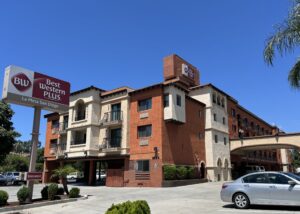Napa Hotel Room Revenue Tops $426.8 Million in 2018 – a Record
Napa Hotel Room Revenue Tops $426.8 Million in 2018 – a Record
Napa Valley Register
02/23/19
Napa Hotel Room Revenue Tops $426.8 Million in 2018 – a Record
By Jennifer Huffman
If you build it they will come… and spend money.
Overnight visitors to Napa County spent more than $426 million in Napa hotel rooms in 2018, a 7.6 percent increase from the year before and a record high.
The average daily room rate of a Napa County hotel rose 4.9 percent — reaching $324.80 per night. Occupancy dipped just .5 percent, settling in at 71.1 percent, according to data and analytics specialist company STR.
“It’s great,” said Clay Gregory, CEO of Visit Napa Valley. “We’re very happy about,” the increases.
Gregory attributes those changes to several things, including the addition of more hotel rooms, an increase in international visitors, and VNV’s ability to market the valley as open for business, especially after the 2017 fires.
According to Atlas Hospitality Group and VNV, an estimated 167 new rooms opened in Napa County in 2018. The majority — 145 rooms — opened at the Vista Collina Resort in South Napa.
A smaller number of new rooms also opened in the Francis House in Calistoga, The Ink House in St. Helena, The Bungalows in Calistoga and the R Inn in Napa. The Archer Napa, with 183 rooms, opened in November 2017.
“Hotels are doing obviously incredibly well in Napa,” said Alan X. Reay, president of Atlas Hospitality Group of Irvine.
The reason Napa Valley is so successful is thanks to tremendous demand and not enough supply, he said.
Napa Valley is probably one of the strongest markets in California for investors and for potential developers, said Reay. However, “it’s very difficult to find land and to develop.”
As many locals already know, “There are not a lot of budget options in Napa,” said Reay. “You can’t afford to build a Motel 6 in Napa.”
The increase in revenue and room rate isn’t a surprise to Jan Freitag, senior vice president of STR.
Napa County’s occupancy rate of 71.1 percent and room rate of $324.80 are very healthy numbers, said Freitag.
The national average hotel occupancy is 66.2 percent and the national average room rate is $130, he noted.
Therefore, the Napa Valley remains “an attractive market for developers and existing hoteliers to be in,” said Freitag.
Indeed, two larger hotels are expected to open in 2019: the Cambria Hotel on Soscol Avenue in Napa (90 rooms) and the Four Seasons in Calistoga (84 rooms).
Freitag noted that the U.S. hotel industry has grown in 105 out of the past 106 months — essentially since the Great Recession.
“That run-up is not unprecedented, but obviously investors, banks and developers are a little bit more careful these days because they don’t want to build into a recession.”
Freitag is not suggesting anything will go wrong. In fact, he forecasts that 2019 and 2020 “will be good but with slower growth.”
Reay said he’s forecasting a leveling-off in hotel values and revenue per available room increases.
Interest rates are going up, which can mean that some buyers can’t afford to pay what they might have paid last year for a hotel, Reay noted. That can also affect what banks are willing to lend for hotels and how much hotels are appraised for.
In addition, “The cost of running operations is going up, especially labor costs.”
However, “As long as the economy continues to be strong I think Napa Valley will still do well,” said Reay.


